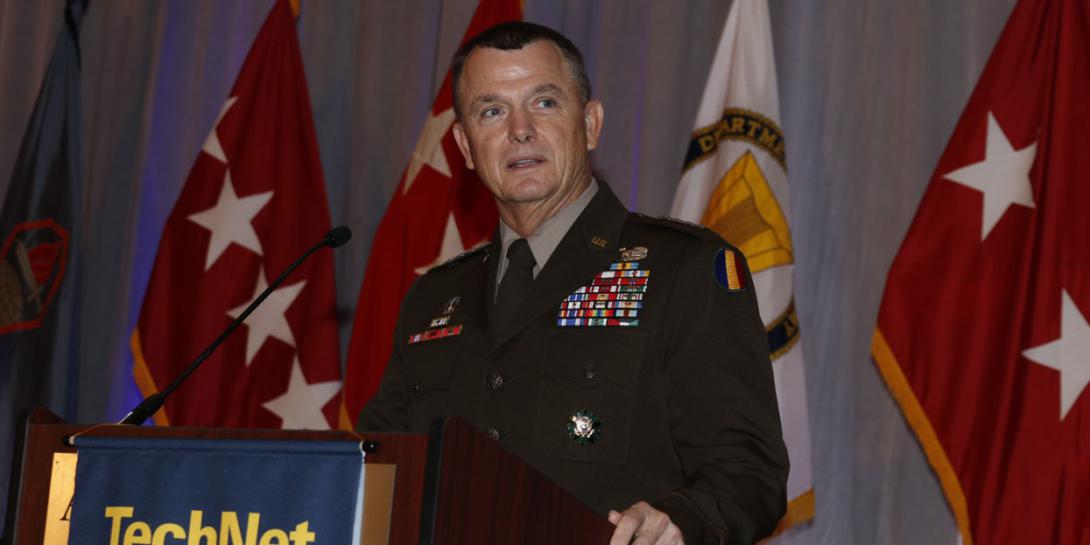Army Adding Information Dominance to Campaign Plan
A U.S. Army strategy document currently being developed and due to be published this year will emphasize the need to dominate in the information realm, Gen. Paul Funk, USA, commander, U.S. Army Training and Doctrine Command (TRADOC), told the audience on the first day of the AFCEA TechNet Augusta conference in Augusta, Georgia.
Gen. Paul Funk, commander, @TRADOC: It is the quality, training and leadership of the men and women at the tip of the spear--whether with bayonets or 1s and 0s--that will determine victory. #AFCEATechNet
— George Seffers (@gseffers) August 20, 2019
“At TRADOC, we are working to include information dominance in the Army campaign plan, to declare or decide who has proponency and to develop an information strategy,” Gen. Funk said during the first morning’s keynote. “We need to invest in the appropriate resources, in the data mining, in the alerts, in the restructuring of information operations for success on the future battlefield.”
He suggested the service has room to improve. “Our application of information dominance is too narrow. It is under-developed and lacks coordination. … And we need to invest in the appropriate resources, in the data mining, in the alerts, in the restructuring of information operations for success on the future battlefield,” the general stated.
At TRADOC, we are working to include information dominance in the Army campaign plan.--Gen. Paul E. Funk II, USA, commander, U.S. Army Training and Doctrine Command, @TRADOC#AFCEATechNet
— George Seffers (@gseffers) August 20, 2019
He listed some observations the Army needs to keep in mind while developing the strategy document. First, the general indicated, “The Army does not yet understand how best to degrade connecting systems, whether an attack on one component has the desired ripple effect on the entire system. He added that officials do not know whether they truly know what adversaries understand about the U.S. Army. “It’s not what you don’t know that gets you killed. It’s what you think you do know that ain’t so.”
Finally, Gen. Funk said, “We build future architectures that are critically dependent on the uninterrupted flow of large amounts of data, even though we expect that future conflicts will be characterized by cyber [tools] that are specifically deployed to frustrate such architectures.”
Gen. Paul Funk, commander, @TRADOC, encouraging service members to get out and talk about the Army, to engage the public, says "We are all in the recruiting business." #AFCEATechNet
— George Seffers (@gseffers) August 20, 2019
The general related that in discussions he has had with the prime minister of Iraq, the prime minister compared the U.S. approach to information operations to that of its adversaries, specifically Russia. The United States, the prime minister observed, says something once and expects everyone to fall in line. On the other hand, the Russians, cry “disinformation” a thousand times a day on every network and in every domain.
In a brief exchange with SIGNAL Magazine following his remarks, Gen. Funk added the pending strategy document will inform important decisions. The strategy document is led by the Army G-3, or operations staff. “The Army develops a campaign plan every year to drive itself toward making critical decisions. The G-3 puts it together, and it gets beat up—what topics and what lines of effort we’re after—and then we try to rack and stack the resources,” he said. “One of the things we’ve got to get back in the business of is information. We need to dominate in that domain. We want to get that as part of the strategy so that we can then get the resources necessary to drive it forward.”
It will be released in the coming months. “It’s going now. I’m not sure what the timing is, but they’ll publish it this year,” Gen. Funk offered.





Comments